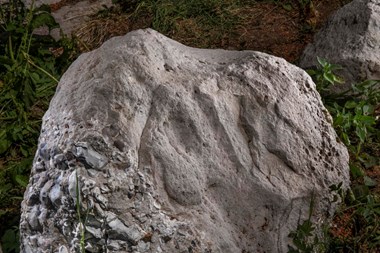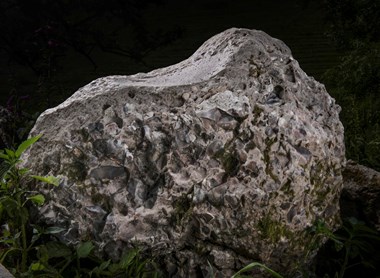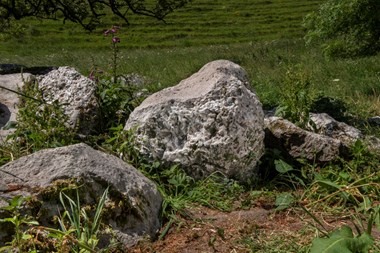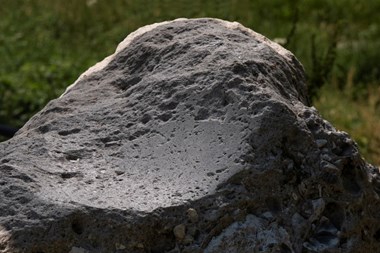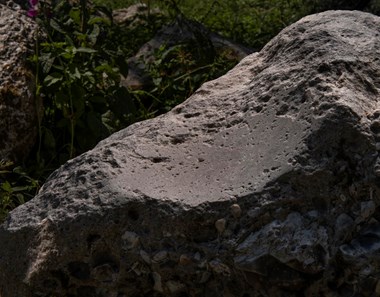Rare Stone Age Artefact Discovered In Dorset
An extremely rare and important stone artefact dating back over 5,000 years has been discovered during a community heritage project in the Valley of Stones National Nature Reserve in Dorset.
A polishing boulder, known as a polissoir, has been discovered in situ with a distinctive dished glossy surface, which shows it was used to polish stone axe heads over 5,000 years ago.
It is only the second undisturbed polissoir found in its original position in England.
The natural boulder is formed of sarsen stone, a particularly hard form of sandstone known as silcrete (a cemented mass of sand and gravel), which was used during the Neolithic period for building monuments such as Stonehenge.
Sarsen boulders are found across southern England, but out of nearly 1,000 that have been examined by experts, including Dorset’s sarsens, very few are known to have been used for polishing stone tools.
The stone is located in the Valley of Stones National Nature Reserve and within a Site of Special Scientific Interest (SSSI). The area is also protected as a scheduled monument.
Gallery
Please click on the gallery images to enlarge.
The community archaeology company Past Participate CIC was leading a survey to locate sarsens in West Dorset. The project was in the Dorset Area of Outstanding Natural Beauty and funded by the Farming in Protected Landscapes Fund.
Volunteers from the conservation group EuCAN working with Natural England contacted Past Participate about an area of the nearby Valley of Stones. The area had recently been cleared of vegetation, revealing sarsens that had not been visible for decades. An examination of these sarsens led directly to the discovery of the polissoir.
Finding a polissoir was a very unexpected outcome of our sarsen survey. These stones rarely survive, but would have been extremely important to Neolithic people, as without axes they could not have cleared woodland and farming would have been impossible. Our investigation of the polissoir will provide important insights into the use of this landscape almost 6, 000 years ago.
What was it used for?
The polishing stone was used to sharpen stone axe heads, the essential tool for the early farming people of the Neolithic. Stone axes were used to clear woodland and build houses and monuments, and were made of various raw materials such as flint, volcanic tuff, and granite.
There is evidence that many of these stone axes travelled widely in prehistoric times, whether they were traded as part of exchange systems or carried by their owners from distant sources where the stone was quarried. For felling trees and working with timber, the stone axe heads would have been attached to a wooden handle, but this part of the tool very rarely survives.
This is a hugely exciting and rare discovery in this little understood historic landscape, which is giving us an opportunity to explore the use of the stone, and the communities who were using it. Our scientists and landscape investigators are providing specialist expertise and advice to get a better understanding and record of this unique site and its wider archaeological setting.
The next steps
Following the discovery of the polissoir, the immediate area around the stone has been subject to excavation and specialist analysis to see if any traces of the makers of the stone axes are still present. The excavation is the result of a collaboration between Past Participate CIC, Historic England and Natural England, together with local volunteers who have been integral to this discovery.
Historic England has now started a programme of state-of-the-art research, which will examine the wider landscape to increase understanding of the prehistoric and historic features that remain.
This incredible discovery represents the research value that community heritage projects can bring. We are grateful for the Farming in Protected Landscapes scheme for funding that stimulated these investigations into the Valley of Stones, and Historic England and local landowners for their support. We hope to secure further funding that will enable us to continue our work in this landscape with our committed team of volunteers.


